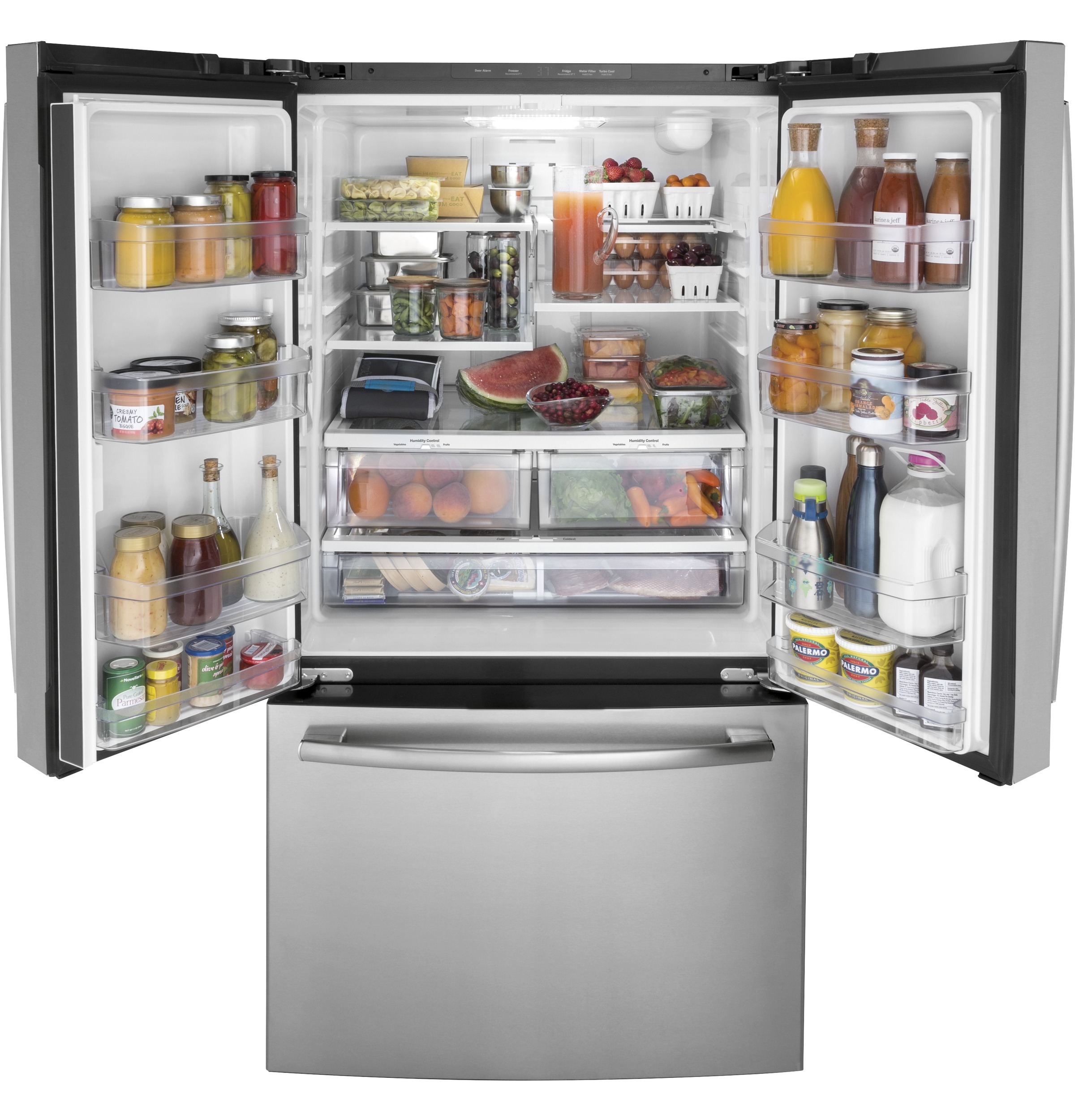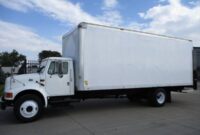Refrigerator For Food Truck: The Chilled Core of Your Mobile Kitchen pickup.truckstrend.com
In the bustling world of mobile gastronomy, where culinary creativity meets the open road, the success of a food truck hinges on numerous factors. While a captivating menu, skilled chefs, and a prime location are undoubtedly crucial, one unsung hero often operates quietly behind the scenes, ensuring the safety and quality of every dish: the refrigerator. For a food truck, refrigeration isn’t merely a convenience; it’s the chilled core that protects your ingredients, preserves your profits, and safeguards your customers’ health.
Unlike static restaurant kitchens, food trucks present a unique set of challenges for refrigeration. They operate in dynamic environments, subject to constant movement, vibrations, fluctuating temperatures, and limited space and power. This demands specialized solutions – robust, efficient, and reliable refrigerators designed to withstand the rigors of life on wheels. Choosing the right refrigeration system is not just an equipment decision; it’s a fundamental investment in your food truck’s operational efficiency, compliance, and ultimately, its long-term viability. This comprehensive guide will delve into the critical aspects of selecting, installing, and maintaining the perfect refrigeration system for your food truck, ensuring your ingredients stay fresh and your business stays cool.
Refrigerator For Food Truck: The Chilled Core of Your Mobile Kitchen
Why Specialized Refrigeration is Non-Negotiable for Food Trucks
The unique operational environment of a food truck renders standard residential or even light-duty commercial refrigerators inadequate. Here’s why specialized refrigeration is paramount:
- Vibration and Movement: Food trucks are constantly in motion, enduring bumps, turns, and stops. Standard compressors and internal components are not designed for this constant jostling, leading to premature failure, refrigerant leaks, and compromised cooling performance. Specialized units feature robust construction and shock-resistant components.
- Temperature Fluctuations: A food truck’s interior can experience extreme temperature swings, from scorching summer heat to chilly winter nights. Refrigerators must be able to maintain consistent internal temperatures regardless of external conditions, a crucial factor for food safety.
- Limited Space: Every inch inside a food truck is precious. Refrigeration units must be compact, often multi-functional, and designed to integrate seamlessly into a tight kitchen layout without hindering workflow.
- Power Constraints: Food trucks typically rely on generators, batteries, or shore power, all of which have limitations. Refrigerators must be highly energy-efficient to minimize fuel consumption, extend battery life, and reduce the load on the power system.
- Health and Safety Regulations: Health departments have stringent rules regarding food temperature control. Food truck refrigerators must consistently maintain specific temperature ranges (typically below 41°F or 5°C for refrigeration, and below 0°F or -18°C for freezing) to prevent bacterial growth. Compliance is not optional; it’s a license to operate.
- Durability and Longevity: The investment in a food truck is significant. Equipment must be built to last, enduring daily use in a demanding environment. Commercial-grade, specialized units offer superior longevity compared to their residential counterparts.

Ignoring these factors can lead to spoiled food, failed health inspections, costly repairs, and ultimately, a business on the rocks.
Types of Refrigerators for Food Trucks: Finding Your Perfect Fit
The diverse needs of food truck operations have led to the development of several specialized refrigeration types, each offering unique advantages:

- Undercounter/Worktop Refrigerators: These are perhaps the most popular choice for food trucks due to their dual functionality. They serve as both refrigerated storage and a sturdy work surface, maximizing limited space. Available in various sizes and configurations (solid door, glass door, or drawer), they are ideal for storing frequently accessed ingredients directly at a prep station.
- Upright Reach-in Refrigerators/Freezers: For trucks requiring more storage capacity, upright units offer vertical space utilization. While they take up floor space, they provide extensive storage for bulk ingredients or pre-prepped items. They come in single, double, or even triple door configurations, as refrigerators, freezers, or combination units.
- Refrigerated Prep Tables (Sandwich/Salad Prep Units): These are indispensable for food trucks that prepare sandwiches, salads, or other dishes requiring multiple cold ingredients. They feature a refrigerated base for bulk storage and an insulated top rail with individual pans for various toppings, keeping them chilled and easily accessible during service. A cutting board surface typically runs along the front.
- Drawer Refrigerators/Freezers: Highly efficient for space-constrained environments, drawer units slide out for easy access to ingredients. They can be installed under counters or in other tight spots, offering excellent organization and minimizing cold air loss compared to swing doors. They are particularly useful for storing specific categories of ingredients.
- Portable/Chest Freezers/Coolers: While not primary refrigeration, these can serve as supplementary storage for drinks, ice, or overflow ingredients. They often operate on 12V DC power or even propane, offering flexibility. However, they are generally not suitable for critical food storage requiring strict temperature control for extended periods due to their less robust insulation and cooling capabilities compared to built-in units.

The choice among these types depends heavily on your menu, daily volume, available space, and power infrastructure. Many food trucks utilize a combination of these units to create an optimized cold storage system.
Key Features and Considerations When Choosing Your Unit
Selecting the right refrigerator involves more than just picking a size. A thorough evaluation of features and practical considerations is crucial:
- Power Source & Efficiency: This is paramount.
- 12V DC: Ideal for direct connection to your truck’s battery system, minimizing power conversion loss. Requires a robust battery bank and charging system.
- 120V AC: Standard household current, often powered by a generator or shore power. Requires an inverter if running off batteries.
- Propane/Dual Fuel: Some chest freezers or older absorption-style refrigerators can run on propane, offering versatility in power-limited situations, though compressor units are generally more efficient for primary food truck use.
- Energy Star Rating/Efficiency: Look for energy-efficient models to reduce fuel consumption and extend battery life. High-efficiency compressors and good insulation are key.
- Construction and Durability:
- Stainless Steel: The industry standard for commercial kitchens due to its durability, ease of cleaning, and corrosion resistance. Look for high-grade stainless steel (e.g., 304).
- Heavy-Duty Compressors: Designed to withstand vibrations and operate reliably in demanding conditions.
- Robust Hinges and Latches: Essential for doors that will be opened and closed frequently and subjected to movement.
- Capacity and Dimensions: Measure your available space precisely and map out your truck’s layout. Consider your menu and anticipated daily volume to determine the required internal storage capacity. Don’t forget clearance for ventilation.
- Temperature Control and Monitoring:
- Digital Thermostats: Offer precise temperature settings and easy monitoring.
- Temperature Alarms: Crucial for alerting you if temperatures deviate from safe levels.
- External Temperature Display: Allows quick checks without opening the door.
- NSF Certification: This certification indicates that the equipment meets strict public health standards for design, materials, and construction, ensuring it’s easy to clean and sanitize. Most health departments require NSF-certified equipment for commercial food operations.
- Ventilation Requirements: Refrigeration units generate heat. Proper ventilation is critical to ensure efficient operation and prevent overheating, which can lead to compressor failure. Ensure adequate space around the unit for airflow.
- Mobility and Installation:
- Secure Mounting: Units must be securely bolted down to prevent shifting during transit.
- Casters with Locks: If the unit is occasionally moved for cleaning or maintenance, heavy-duty casters with reliable locking mechanisms are beneficial.
- Drainage: Consider how condensate will be managed. Some units have self-evaporating drains, while others require manual emptying or a connection to a floor drain.
Installation, Maintenance, and Best Practices
Even the best refrigerator will underperform without proper installation and diligent maintenance.
Installation:
- Level and Secure: Ensure the unit is perfectly level to allow proper refrigerant flow and drain operation. Bolt it securely to the floor or walls of the truck using appropriate hardware.
- Adequate Ventilation: Follow manufacturer guidelines for clearance around the compressor and condenser coils. Blocked vents are a common cause of poor performance and premature failure.
- Proper Wiring: Have a qualified electrician handle all electrical connections, ensuring correct voltage, amperage, and grounding. Use dedicated circuits where recommended.
- Test Thoroughly: Before stocking, run the unit for several hours to ensure it reaches and maintains the desired temperature.
Maintenance:
- Regular Cleaning:
- Interior: Wipe down daily with a food-safe sanitizer.
- Exterior: Clean stainless steel surfaces regularly to maintain appearance and hygiene.
- Door Gaskets: Inspect and clean gaskets frequently. Damaged or dirty gaskets lead to air leaks and reduced efficiency. Replace if worn.
- Condenser Coil Cleaning: This is perhaps the most critical maintenance task. Dust, grease, and debris accumulate on the condenser coils, hindering heat dissipation and forcing the compressor to work harder. Clean monthly (or more often in a greasy food truck environment) using a brush and vacuum.
- Evaporator Coil Check: Ensure the evaporator coils inside the refrigerated compartment are free of ice buildup. Excessive ice indicates a problem (e.g., faulty defrost, bad seal, or refrigerant issue).
- Temperature Logs: Keep a daily log of refrigerator temperatures. This helps identify problems early, ensures health code compliance, and provides a record in case of an inspection.
- Professional Servicing: Schedule annual professional maintenance to check refrigerant levels, compressor health, and overall system performance.
Best Practices:
- Pre-chill: Always pre-chill the refrigerator to its target temperature before loading food.
- Proper Loading: Do not overload the unit. Allow space for air circulation around food items. Use proper storage containers.
- Minimize Door Openings: Plan your workflow to reduce how often and how long doors are open.
- Rapid Cooling: For hot foods, cool them rapidly using shallow pans or an ice bath before placing them in the refrigerator to avoid raising the internal temperature of the unit.
- FIFO (First-In, First-Out): Rotate stock to ensure older items are used first.
- Temperature Monitoring Devices: Consider external thermometers with alarms or data logging capabilities for extra vigilance.
Health Code Compliance: Your Non-Negotiable Standard
Health departments are incredibly strict about food temperature control, and for good reason. Pathogens multiply rapidly in the "danger zone" (41°F to 135°F / 5°C to 57°C). Your refrigeration system is your primary defense.
- Temperature Requirements: Your refrigerator must consistently maintain food at or below 41°F (5°C). Freezers must keep food frozen solid, typically below 0°F (-18°C).
- Monitoring and Records: Be prepared to demonstrate that you are monitoring temperatures regularly. Digital logs or manual charts are often required.
- NSF Certification: As mentioned, most health departments require equipment to be NSF-certified, ensuring it meets standards for hygiene and performance.
- Adequate Capacity: Ensure your units have enough capacity for your peak service demands. Overstuffing leads to poor air circulation and unsafe temperatures.
- Prevent Cross-Contamination: Store raw meats on the lowest shelves, below ready-to-eat foods, to prevent drips.
Adhering to these standards is not just about avoiding fines; it’s about protecting your customers and your brand’s reputation.
Refrigerator For Food Truck: Estimated Price Guide
Please note: Prices for commercial refrigeration equipment can vary significantly based on brand, capacity, features, and new vs. used condition. The table below provides estimated price ranges for common food truck refrigeration types. Always obtain multiple quotes from reputable suppliers.
| Refrigerator Type | Typical Capacity Range (Cubic Feet / Liters) | Power Source Options | Key Features | Estimated Price Range (USD) |
|---|---|---|---|---|
| Undercounter/Worktop Refrigerator | 6-20 cu ft (170-566 L) | 120V AC, some 12V DC | Stainless steel, NSF-certified, digital temp control, dual-purpose (storage & work surface), self-closing doors | $1,500 – $4,500 |
| Upright Reach-in Refrigerator | 20-70 cu ft (566-1982 L) | 120V AC | Stainless steel, NSF-certified, forced air cooling, adjustable shelving, robust hinges, often with casters | $2,500 – $8,000 |
| Refrigerated Prep Table | 9-30 cu ft (255-850 L) | 120V AC | Stainless steel, NSF-certified, top rail for pans, cutting board, bottom storage, forced air cooling | $2,000 – $6,000 |
| Drawer Refrigerator/Freezer | 3-10 cu ft (85-283 L) per drawer | 120V AC, some 12V DC | Stainless steel, NSF-certified, full-extension drawers, space-saving, excellent cold retention | $1,800 – $5,000 per unit |
| Commercial Chest Freezer | 5-25 cu ft (141-708 L) | 120V AC, some 12V DC/Propane | Heavy-duty insulation, top-opening, often with baskets, can be used for bulk storage or ice | $500 – $2,000 |
| 12V DC Portable Fridge/Freezer | 0.5-2 cu ft (15-60 L) | 12V DC, 120V AC (with adapter) | Compact, highly portable, often dual-zone, low power draw, ideal for supplemental or overflow | $300 – $1,200 |
Note: Prices do not include installation costs, shipping, or potential sales tax.
Frequently Asked Questions (FAQ) about Food Truck Refrigeration
Q1: Can I use a regular home refrigerator in my food truck?
A1: Absolutely not. Home refrigerators are not designed to withstand the vibrations, temperature fluctuations, or constant movement of a food truck. Their compressors and internal components will fail prematurely, leading to spoiled food and safety hazards. Furthermore, they are typically not NSF-certified, which is often a health department requirement for commercial operations.
Q2: What’s the best power source for a food truck refrigerator?
A2: For primary, continuous refrigeration, 120V AC units powered by a reliable generator or shore power are common. For smaller or supplementary units, or for trucks with robust battery banks, 12V DC refrigerators are excellent for efficiency as they avoid inverter losses. The "best" depends on your truck’s overall power system design and your menu’s demands.
Q3: How often should I clean my refrigerator’s condenser coils?
A3: In a food truck environment, where grease and dust are prevalent, you should aim to clean your condenser coils at least monthly. In high-volume or particularly greasy operations, weekly cleaning might be necessary. This is crucial for efficiency and longevity.
Q4: Do I need a separate freezer, or can a refrigerator suffice?
A4: Most food trucks require both refrigeration and freezing capabilities. Refrigerators maintain temperatures above freezing (typically 34-40°F / 1-4°C), while freezers keep food frozen solid (0°F / -18°C or below). If your menu includes frozen ingredients (meats, ice cream, pre-made items), a dedicated freezer is essential for food safety and quality.
Q5: What is NSF certification, and why is it important?
A5: NSF International is an independent organization that certifies products and writes standards for public health and safety. NSF certification for food equipment means the product has been tested and meets strict standards for design, materials, and construction, ensuring it’s easy to clean, sanitize, and won’t harbor bacteria. Most health departments mandate NSF-certified equipment for commercial kitchens, including food trucks.
Q6: How can I keep food cold during transport before I set up my truck?
A6: For transport, use insulated food-grade containers or high-quality coolers with ice packs or gel packs. Some food trucks have a "cold box" designed to maintain temperature during travel without active power. Always ensure food reaches your truck’s refrigerator and is safely stored as quickly as possible.
Conclusion
The refrigerator in a food truck is far more than just a box that keeps things cold; it is an indispensable piece of specialized equipment that underpins food safety, operational efficiency, and ultimately, the success of your mobile culinary venture. From safeguarding perishable ingredients to ensuring compliance with strict health regulations, the right refrigeration system is a non-negotiable investment.
By understanding the unique challenges of food truck environments, carefully selecting the appropriate type of refrigerator, prioritizing key features like power source, durability, and NSF certification, and committing to diligent maintenance, food truck operators can ensure their chilled core remains robust and reliable. Investing wisely in your food truck’s refrigeration system is investing in peace of mind, customer trust, and the long-term profitability of your delicious dreams on wheels.


